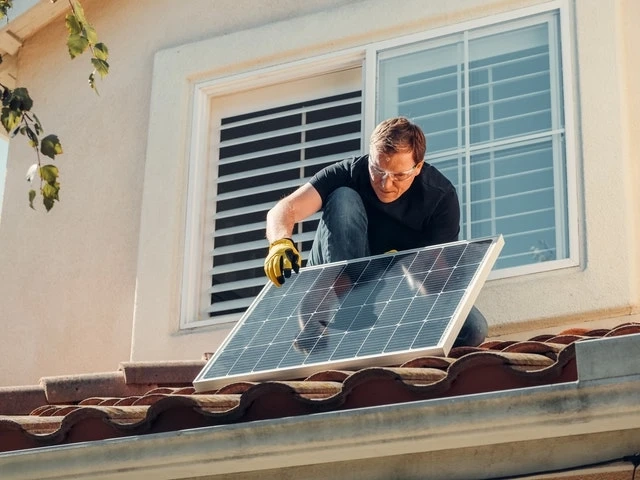Making the switch to solar energy is a big decision, but it can have a lot of benefits for your house. You will be doing your part to help the environment, but you'll also be able to cut your reliance on fossil fuels and reduce your energy bills. This blog post will discuss what you need to do to turn your house into using clean solar energy. We'll cover everything from Solar Power Installation to Energy Efficiency Measures that you can take to reduce your consumption.
What are the things you need to turn your house solar?
Solar panels are the most visible sign of solar power, but they’re just one part of the system. Solar-powered homes also need batteries to store energy for use at night or during a power outage and an inverter to convert DC electricity from the solar panels into AC power that can be used in your house. Let's understand the different parts of a building sustained by an efficient solar power installation.
Solar Panels: Solar panels are devices that converts sunlight into electricity. They’re also called photovoltaic (PV) cells, usually silicon. Solar panels come in various shapes and sizes, but the most common type for residential solar power systems is the flat-plate PV panel.Solar Inverter: The solar inverter is vital for any solar power system. It’s a device that converts direct current (DC) electricity from the solar panels into alternating current (AC) electricity, the kind of power used in your home. Solar inverters come in different types and sizes, but the most common type for residential solar power systems is a string inverter.Solar Batteries: Solar batteries are used to store excess solar energy to be used when the sun isn’t shining. Solar batteries come in various types and sizes, but the most common type for residential solar power systems is lead-acid batteries. Solar batteries can be used to power your home in the event of a power outage, or they can be used to store excess solar energy for use at night or on cloudy days.Solar Charge Controllers: Solar charge controllers are devices that regulate the flow of electricity from the solar panels to the batteries. Solar charge controllers come in various types, but the most common type for residential solar power systems is the pulse width modulated (PWM) controller. Solar charge controllers prevent overcharging of the batteries and protect the batteries from being damaged by excessive charging or discharging.These are the main components of a solar power installation that will turn your home into a clean solar energy home. Solar power is an alternate and effective way to reduce your carbon footprint and energy bills. With a suitable solar power installation, you can achieve complete energy independence.
What is solar metering, and how is it beneficial for homeowners?
Solar metering is the process of monitoring the amount of electricity that your solar power system produces. Solar meters can be used to track the productivity of your solar panels and help you to optimise their output. Solar metering ensures that you are getting the most out of your solar power installation.
How much will you save by switching to solar?
The amount of money you will save by switching to solar depends on many factors, including the size of your solar power system, the cost of electricity in your area, and your current energy consumption. Solar power is typically more expensive than traditional forms of energy, but it is becoming increasingly accessible as technology improves and more homeowners make the switch.
What are the Solar Rebates in Australia?
Solar Rebates in Australia give homeowners incentives like cutting the upfront cost of a solar power installation. The rebate is a point-of-sale discount applied when you have your system installed, and it can be worth up to $2000. To be eligible for solar rebates, you have to install an approved design that meets specific criteria. Solar rebates are available in every state and territory, so there will be a rebate that can help you save on your solar power purchase.
0


